More than 45 years have passed, yet the Tangshan earthquake remains a haunting memory not only for the people of China but for the entire world.
The Deadliest Earthquake of the 20th Century
At 3:42 AM on July 28, 1976, a powerful earthquake measuring 7.8 on the Richter scale struck the city of Tangshan (Hebei, China).
The epicenter of the earthquake was located in downtown Tangshan. In an instant, a city with a population of one million was reduced to rubble, with devastating losses of life and property for the residents as well as national assets. The area affected by the earthquake exceeded 30,000 km2, impacting up to 14 provinces, municipalities, and autonomous regions, equivalent to one-third of the country’s total area.
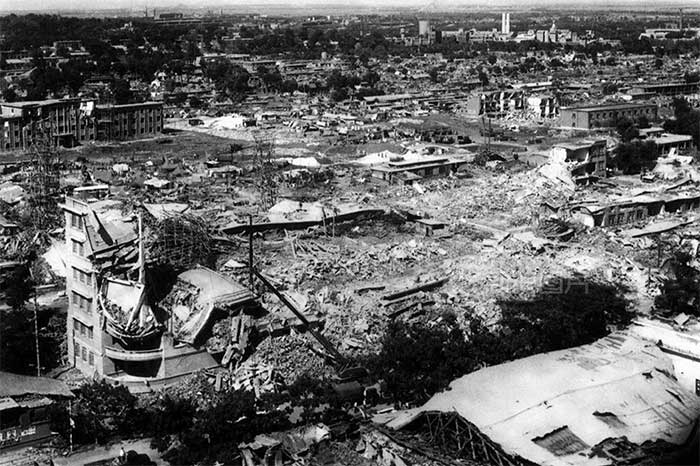
The devastated scene of part of Tangshan after the terrifying 7.8 Richter earthquake.
The earthquake resulted in nearly 255,000 fatalities, 1,645,810 severe injuries, and over 1,700 people with permanent disabilities solely in Tangshan; 14.79 million square meters of public infrastructure were destroyed and 5.3 million homes collapsed. The Tangshan earthquake is the most horrific earthquake in the world of the 20th century.
Millions were left homeless, and the years of psychological trauma endured by most survivors severely impacted Tangshan, a city with a history of industrial development spanning hundreds of years. The Tangshan earthquake is an indelible pain in the hearts of the Chinese people.
When history was etched on July 28, 1976, Tangshan, an industrial city located on the coast of Bohai Sea, trembled. This remains the deadliest earthquake to date. Since then, dark memories have enveloped the city.
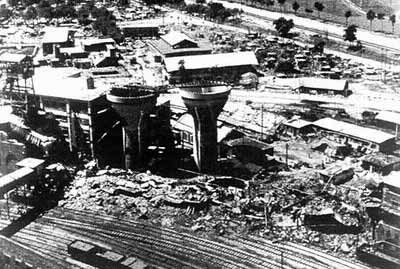
The Kailuan Coal Mine’s coal washing plant collapsed.
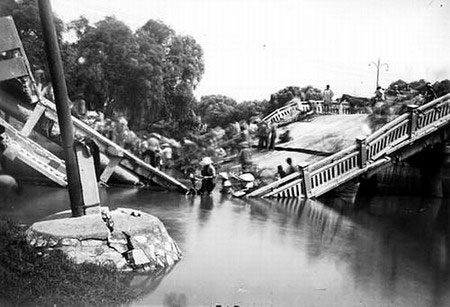
The Thang Loi Bridge in Tangshan collapsed during the devastating earthquake.
When the disaster struck, cities and villages were engulfed in immense sorrow, so severe that the people of Tangshan forgot how to cry for a time. Under the gray sky of the city, dust rose from the ruins, with twisted and shattered concrete slabs everywhere, and the wails of the injured and the dead echoed throughout.
The city fell into unprecedented despair, and rumors spread of the “sky falling.” Survivors began to flee to the mountains, with some even climbing onto railway tracks, believing that the long tracks would not easily collapse.
Tangshan is located at the juncture of the Yinshan and Yanshan mountain ranges and the Kubo depression in the North China Plain, on the Beijing-Tianjin-Tangshan-Bohai seismic belt. There have been 252 recorded earthquakes in the Tangshan area in the “Catalog of Earthquakes in China.”
“Flowers Bloomed” Amid the Horrific Disaster that Struck Tangshan
Disaster comes and goes, leaving behind death and sorrow. When mentioning the Tangshan earthquake, people only recall the horrifying numbers and images of devastation.
Yet amid the catastrophe, there were individuals who strained to save each other; each person rescued from the debris represented a tremendous effort fueled by blood, flesh, and tears. In the aftermath of the disaster, while pain lingered, those who remained had to continue living.
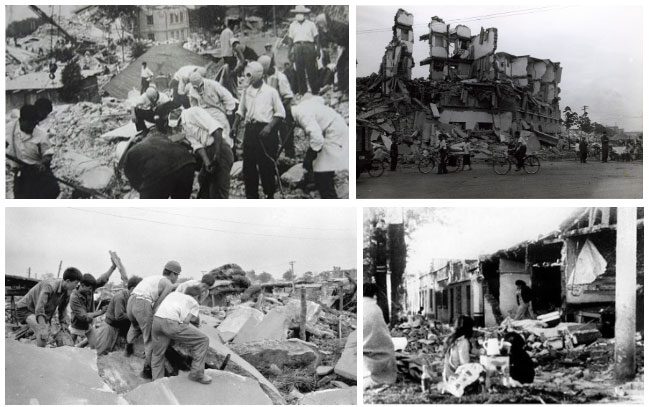
Rescue efforts intensified after the devastating earthquake.
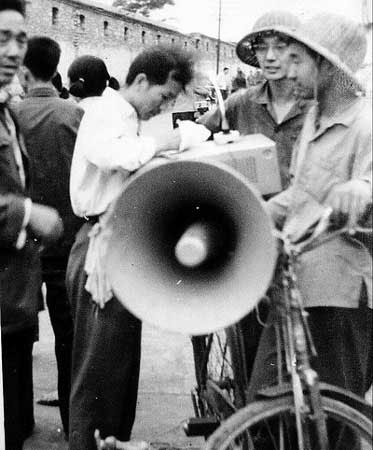
From around 5 AM after the earthquake, broadcasters cycled through the debris of Zhaogezhuang, within a radius of 3-4 km, repeating announcements to maintain law and order… In the chaos of the rubble, the familiar voice from the mobile radio provided great comfort to everyone, prompting them to quickly organize into earthquake relief teams.
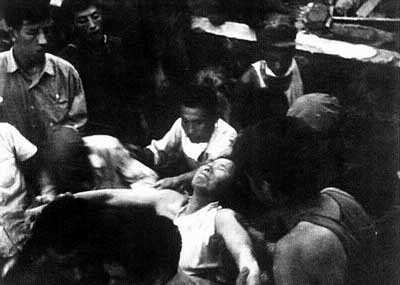
In the eyes of all survivors, saving lives is the most important thing, including prisoners in the Tangshan city jail. The prisoners were organized into three rescue teams, with a special team supervised by armed guards. With blood on their hands and sweat on their faces, the prisoners carefully carried injured children and frightened elderly individuals. Most of the rescued from the debris were severely injured, many losing limbs. Each time they rescued a victim, the prisoners could not help but sigh softly, with some even shedding tears.
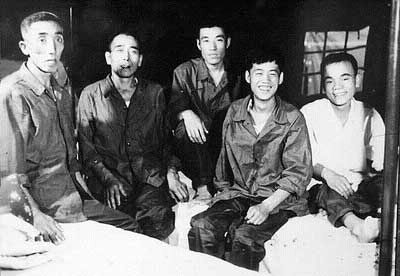
Ten minutes after the shaking ended, five miners in Zhao Kezhang struggled to shake off the rubble of coal and discovered they were in a desperate situation, water was about to flood in, ventilation was blocked, the roadway had collapsed in many places, and pathways were obstructed, causing the air underground to grow thinner… Yet these five men survived for 15 days underground, creating a miracle amid the dark days in Tangshan.
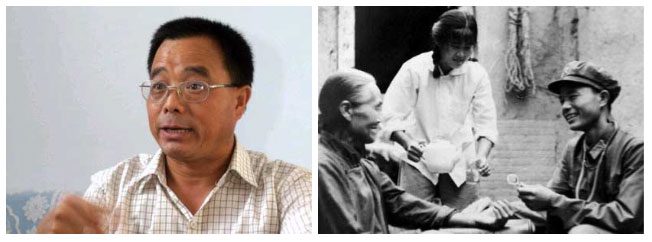
Mr. Zhang Guo Qing from the medical team examining the public. After the Tangshan earthquake, he was sent to the disaster area for relief efforts. He never forgets that during the three days and nights from the evening of July 28 to July 31, all medical staff did not sleep for even a few minutes. Due to overwork, Zhang Guo Qing fainted three times: “After waking up, I washed my face with cold water and immediately went to rescue the injured.“
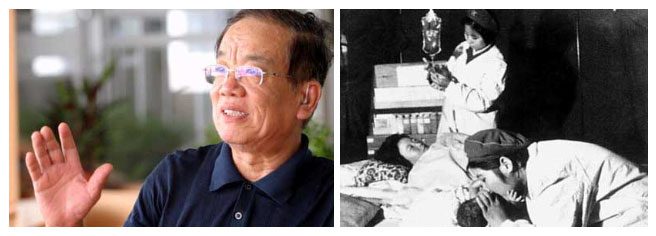
“At that time, the aftershocks were very strong, shaking every few seconds. Our medical team disregarded our own safety, working day and night to rescue the injured.” This was stated by 75-year-old Yan Xiu Chen, a medic, recalling more than 40 days and nights spent during the disaster in Tangshan in 1976.
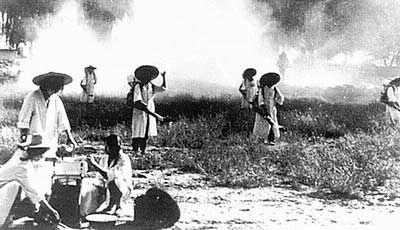
After the earthquake, healthcare workers began vigorous disease prevention efforts.
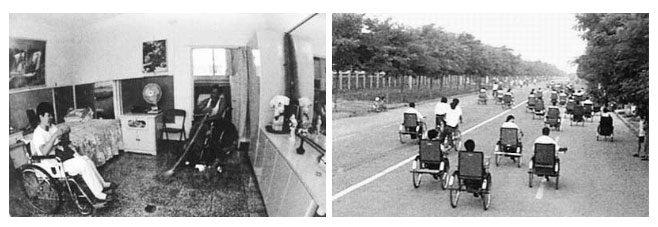
A village became a rehabilitation area for paralyzed patients after the earthquake. Nearly 50 years have passed, and the physical pain inflicted by the earthquake on the people of Tangshan has gradually eased, but the emotional scars still torment the survivors of the disaster.
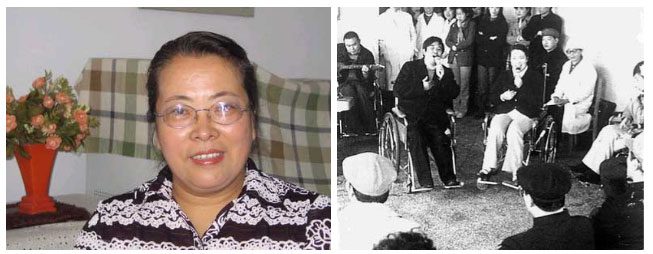
Diao Sui Qian, a female soldier who was injured and disabled in the Tangshan earthquake. Overcoming her pain, Diao Sui Qian (right) continues to live passionately and often sings for patients in nursing homes.
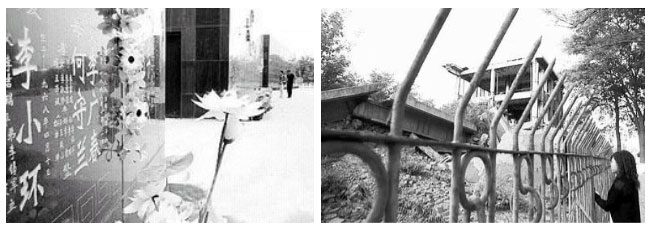
White lilies and pink carnations are offered at the memorial for the Tangshan earthquake, symbolizing the remembrance of the living for those who have fallen in this land.
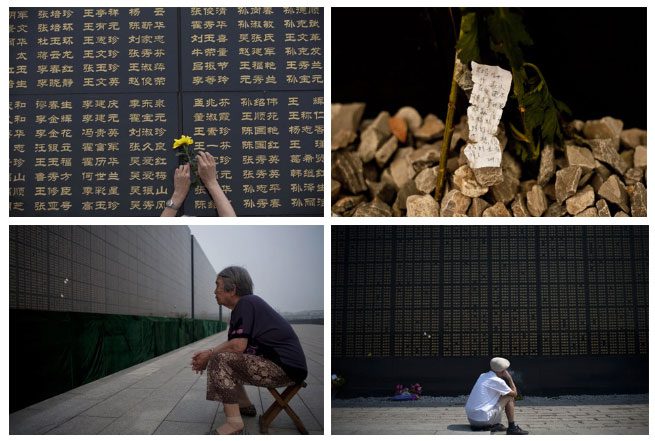
This is the memorial for the victims of the devastating earthquake in Tangshan in 1976. The names engraved on the large slabs are remembered by those fortunate enough to be found by their families, while others may only remain as a somber reminder of history. Every year, during the Qingming Festival or on July 28, the people of Tangshan burn paper money on the streets and alleys. Thousands of flickering flames scattered throughout the city seem to soothe the souls of those who have fallen on this land.


















































